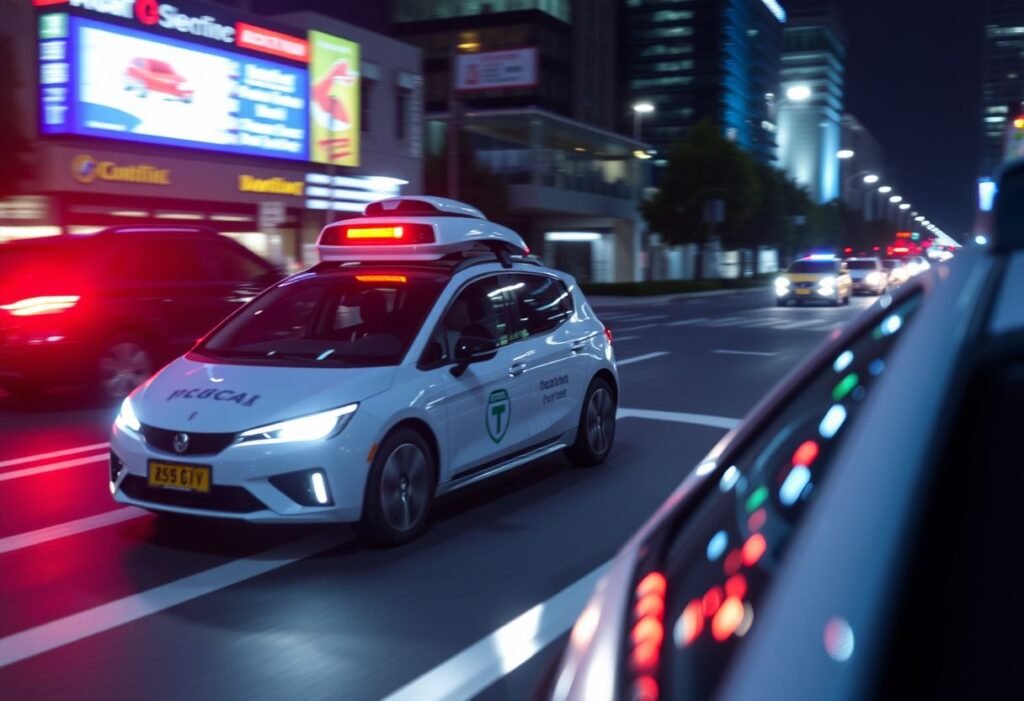As technology continues to evolve, autonomous vehicles are emerging as a transformative force in ride-sharing services. This innovation is not only changing how people travel but is also reshaping urban environments, economic models, and regulatory frameworks.
The Innovative Impact of Autonomous Vehicles
Autonomous vehicles represent a significant leap forward in technology, promising to enhance the efficiency of ride-sharing services. These self-driving cars utilize advanced artificial intelligence systems, allowing for improved navigation and safety. With the capability to communicate with each other and their surroundings, they minimize the risk of accidents while optimizing travel routes. This technology is expected to reduce traffic congestion, a pressing issue for urban areas worldwide. The integration of autonomous vehicles could significantly decrease the need for personal car ownership, leading to a more sustainable and eco-friendly urban lifestyle.
Economic Implications of Self-Driving Ride-Sharing Services
The rise of autonomous ride-sharing services brings notable economic changes. With companies investing heavily in this innovation, job markets are set to evolve. While some traditional driving jobs may become obsolete, new opportunities in sectors such as technology development and vehicle maintenance will emerge. Moreover, as ride-sharing becomes more affordable due to the reduced operational costs of autonomous vehicles, more people may opt for these services instead of owning a vehicle. This shift can lead to a more efficient distribution of resources within urban economies, creating a positive ripple effect that stimulates local businesses.
Safety and Regulatory Challenges Ahead
While the promise of autonomous vehicles is enticing, several regulatory challenges remain. Authorities must navigate complex issues related to liability, safety standards, and data privacy. Establishing a regulatory framework that ensures the safe integration of autonomous vehicles in ride-sharing fleets is crucial. This involves rigorous testing and compliance with existing traffic laws. Public perception also plays a vital role in acceptance; thus, transparent communication about safety measures and technology reliability can influence wider acceptance among potential users.
Environmental Benefits of Autonomous Vehicles
One of the most important aspects of autonomous ride-sharing is its potential environmental benefit. With fewer cars on the road, emissions could significantly decrease. Autonomous vehicles are designed to operate more efficiently than traditional cars, which translates to better fuel or energy consumption rates. This shift toward shared, self-driving options aligns with global movements towards sustainability, creating cleaner cities and promoting renewable energy sources. Data shows that cities that embrace autonomous vehicle technology could lower their carbon footprints substantially, which is a significant step in combating climate change.
The Role of Technology in Enhancing User Experience
Technology plays a pivotal role in improving the user experience in autonomous ride-sharing services. From seamless mobile apps for booking rides to real-time updates on vehicle location, the consumer journey is becoming increasingly efficient and user-friendly. Integrating features like personalized ride experiences and in-vehicle entertainment systems can enhance user satisfaction. Additionally, the use of data analytics allows companies to tailor services according to user behavior, leading to a more customized and enjoyable overall experience.
The Future of Mobility and Urban Planning
As autonomous vehicles become commonplace, their influence on urban planning will become increasingly significant. City designs may evolve to accommodate fewer parking spaces and more pedestrian-friendly areas, as autonomous ride-sharing reduces the reliance on personal vehicles. This future of mobility holds the potential to redefine urban landscapes, making them more livable and accessible. Planners and policymakers will need to align their efforts with technological advances to create urban environments that are resilient and adaptive. This synergy will pave the way for a new era of innovation in transportation.
Disclaimer: The information provided in this article is for informational purposes only and should not be considered legal or professional advice.





















